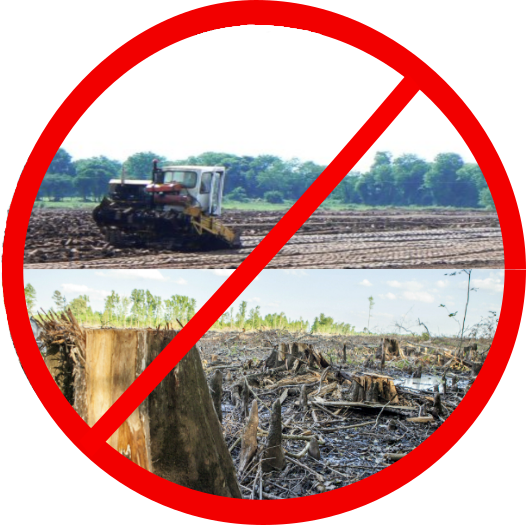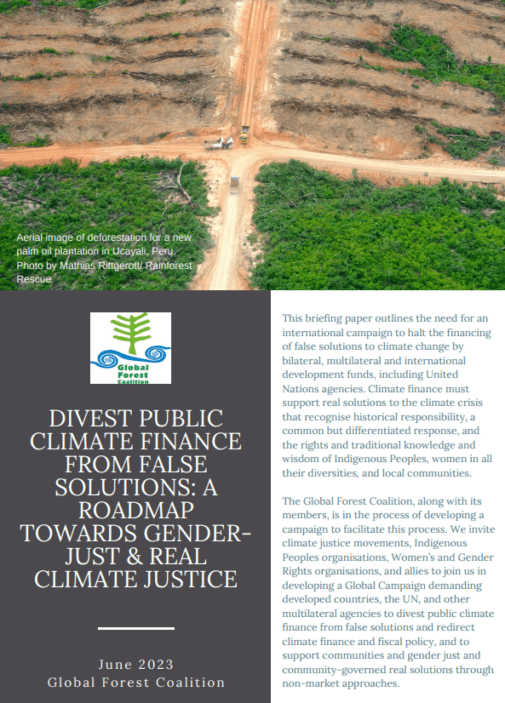Open letter: Ireland’s peat power stations must be shut down, not gradually converted to biomass

August 13, 2018
Subject: Ireland’s peat power stations must be shut down, not gradually converted to biomass
As conservation and environmental justice organizations in the United States, we are deeply concerned about plans by Irish companies, ESB and Bord na Móna, to co-fire increasing amounts of wood pellets in the three remaining peat power stations and to convert them to burn 100% biomass by 2030 (1). Wood pellets from forests and pine plantations in the Southern US are the most likely biomass source for any industrial- scale co-firing and future power station conversions in Ireland. This would further increase forest degradation and conversion to monoculture tree plantations in a region that is the world’s 36th biodiversity hotspot. The forests in the region need to, instead, be left standing to protect communities, fight climate change, and provide habitat for plants and animals.
Science shows that replacing peat with burning wood pellets from forests will not benefit the climate. The upfront carbon emissions of burning wood for electricity are even greater than those of burning peat or coal. Biomass advocates argue that those emissions can be ignored because new trees will “recapture the CO2 emitted.”
However, this claim has been exposed as dangerously misleading by a large number of scientific studies (2). In January 2018, 800 scientists wrote to the European Union, warning: “Even if forests are allowed to regrow, using wood deliberately harvested for burning will increase carbon in the atmosphere and warming for decades to centuries. The reasons are fundamental and occur regardless of whether forest management is ‘sustainable’(3).” If we hope to limit warming to 1.5C, we need to bring about a rapid shift to genuine low-carbon renewable energy, together with greater energy efficiency and conservation, as well as the protection and expansion of forest ecosystems which continuously sequester carbon from the atmosphere.
Even more, there is no prospect of replacing peat with biomass from domestic Irish sources. We are aware that energy plantations, particularly of willow, are being proposed as a biomass feedstock for the three peat power stations. However, there is no realistic prospect of Ireland producing enough biomass from energy crops for industrial-scale burning in peat power stations, in addition to meeting the growing demand for biomass heat. Even more, it is not a realistic economic prospect (4). Finally, if the power station was run on woodchips or pellets, full peat-to-biomass conversions would require more wood than Ireland produces annually.
The large-scale burning of wood in Irish power stations poses a serious threat to Southern US forests. Given that Irish biomass sourcing is not a realistic option on the scale required for the proposed power station conversions or large-scale co-firing, wood pellet imports would be inevitable (5). The southern US is the world’s largest pellet producing region. Pellet production heavily targets coastal hardwood forests which lie at the heart of a global biodiversity hotspot, called the North Atlantic Coastal Plain region. The region is home to hundreds of species of plants, amphibians and reptiles found nowhere else in the world and a large percentage of those depend on hardwood forests for their survival. Those are now being increasingly clearcut for pellet production for export to Europe, often followed by conversion to monoculture pine plantations bereft of wildlife. The largest pellet producer in the region, Enviva, sources wood from hardwood forests. Standing forests are a vital component in the fight against the climate crisis and the maintenance of standing forests as a carbon sink must be prioritized over the unnecessary burning of it in power stations.
We believe that closing down peat power stations is vital for meeting the goals of the Paris Climate Agreement. Burning peat and burning biomass for electricity are both clearly incompatible with the goal of the Paris Climate Agreement to keep global warming to 1.5C. Ireland’s three remaining peat power stations must be shut down, with the capacity being replaced by genuine low-carbon renewable energy and greater energy efficiency and conservation.
We therefore call on the Irish Government to ensure that all three peat power stations are closed down no later than 2020, that no further subsidies for co-firing wood pellets will be paid and that ESB’s forthcoming planning application for co- firing wood pellets in its two peat power stations is not approved.
Sincerely,
Dogwood Alliance
ActionAid USA
Mighty Earth
Center for Biological Diversity
Friends of the Earth
Natural Resources Defense Council
Healthy Forest Coalition
Southern Environmental Law Center
The Rachel Carson Council
Coastal Plain Conservation Group
Green Delaware
Sequoia Forest Keeper
Mass Forest Rescue Campaign
Heartwood Forest Council
Save Our Sky Blue Waters
Lincoln County Community Rights
Mangrove Action Project
Citizens for a Safe Environment
The Clinch Coalition
Swan View Coalition
Global Forest Coalition
Carolina Wetlands Association
Pivot Point
Partnership for Policy Integrity
Florida Environmental Justice Network
Florida League of Conservation Voters
CleanAirSanSimeon
Olympic Peninsula Watch
Biofuelwatch USA
Global Justice Ecology Project
Energy Justice Network
Spruill Farm Conservation Project
(2) See biofuelwatch.org.uk/biomass-resources/resources-on-biomass/ for a list of relevant scientific studies
(4) According to the Sustainable Energy Authority of Ireland, farmers grew less than 1,000 hectares of willow by the end of 2014. We are aware that the Irish Government has announced a trebling of grants for growing willow as well as miscanthus (the latter unsuitable for burning in peat power stations), to €11,465 per hectare per year. However, we calculate that 164,412 hectares of willow plantations would be required for full peat-to-biomass conversions. Based on the recently announced subsidy rate, this would require subsidising the three power stations with €1.88 trillion every year, just to procure the feedstock. This is clearly not a realistic prospect.
(5) Bord na Móna has publicly indicated that US wood pellets are to be the initial biomass source








